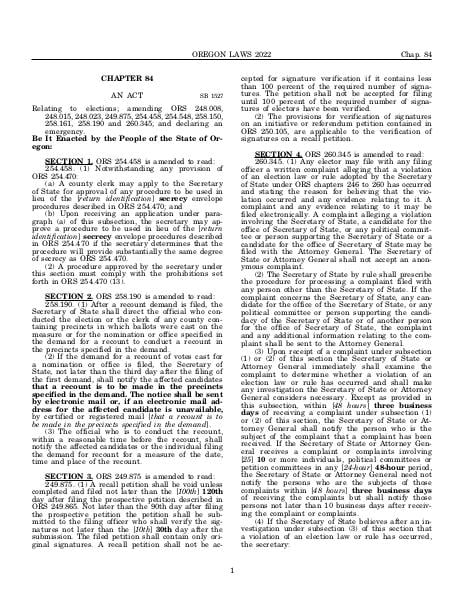Qualification as minor political party
- party member registration requirement
- eligibility to nominate candidates
- maintenance of status as minor political party
- loss of status as minor party
Source:
Section 248.008 — Qualification as minor political party; party member registration requirement; eligibility to nominate candidates; maintenance of status as minor political party; loss of status as minor party, https://www.oregonlegislature.gov/bills_laws/ors/ors248.html.
Notes of Decisions
Under former similar statute (ORS 249.732)
There must be territorial nexus between electoral district where party’s candidate polled votes in preceding election and “district for which nomination is made” in present election. Friedman v. Paulus, 70 Or App 612, 689 P2d 1330 (1984), Sup Ct review denied
In general
Statutory provisions making recognition as “minor political party” contingent on demonstration of support from five percent of voting electorate are not contrary to provisions of Oregon and United States Constitutions. Libertarian Party of Oregon v. Roberts, 305 Or 238, 750 P2d 1147 (1988)
